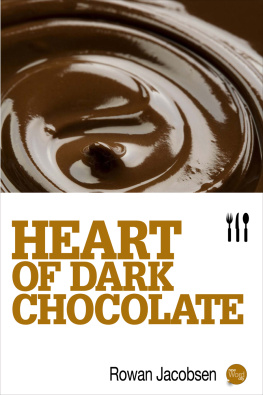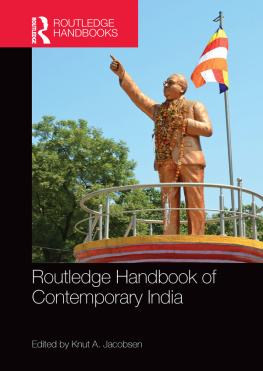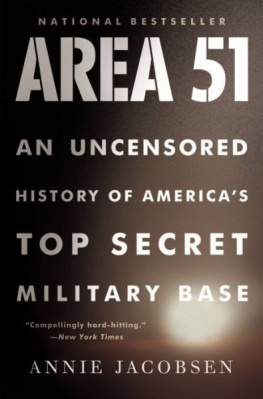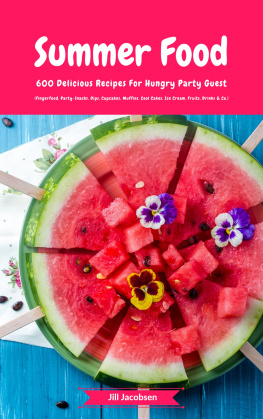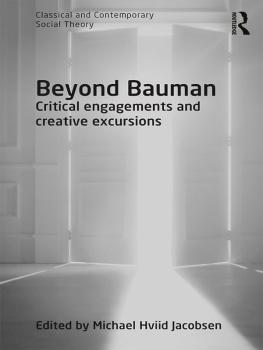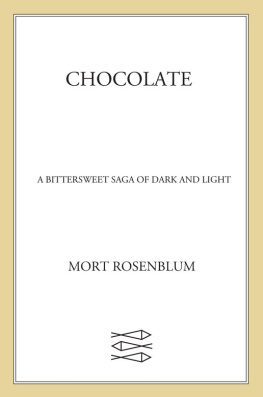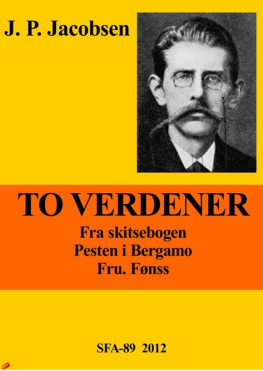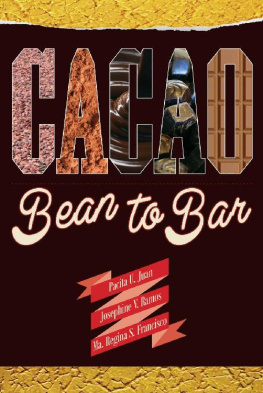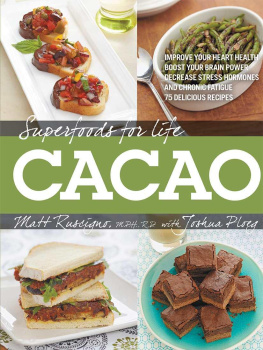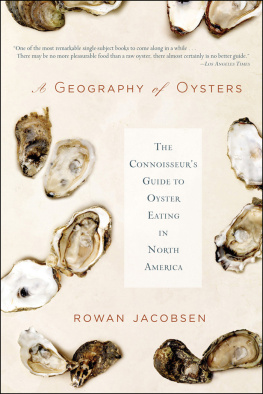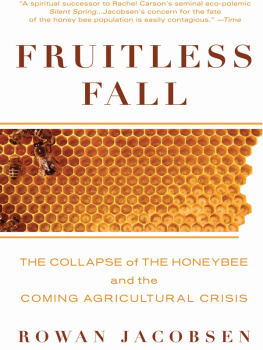Jacobsen - Heart of Dark Chocolate
Here you can read online Jacobsen - Heart of Dark Chocolate full text of the book (entire story) in english for free. Download pdf and epub, get meaning, cover and reviews about this ebook. City: Newbury?, year: 2014, publisher: New Word City, LLC, genre: Detective and thriller. Description of the work, (preface) as well as reviews are available. Best literature library LitArk.com created for fans of good reading and offers a wide selection of genres:
Romance novel
Science fiction
Adventure
Detective
Science
History
Home and family
Prose
Art
Politics
Computer
Non-fiction
Religion
Business
Children
Humor
Choose a favorite category and find really read worthwhile books. Enjoy immersion in the world of imagination, feel the emotions of the characters or learn something new for yourself, make an fascinating discovery.
- Book:Heart of Dark Chocolate
- Author:
- Publisher:New Word City, LLC
- Genre:
- Year:2014
- City:Newbury?
- Rating:5 / 5
- Favourites:Add to favourites
- Your mark:
- 100
- 1
- 2
- 3
- 4
- 5
Heart of Dark Chocolate: summary, description and annotation
We offer to read an annotation, description, summary or preface (depends on what the author of the book "Heart of Dark Chocolate" wrote himself). If you haven't found the necessary information about the book — write in the comments, we will try to find it.
Rowan Jacobsen, winner of the James Beard Award, discovered the best chocolate he had ever eaten a long-lost strain of wild cacao from the Bolivian rainforest. Heres the story of how he tracked it down, journeying by boat into the heart of Amazonia, enduring monstrous ticks, warlike ants, floods, drug runners, fickle outboards, piranha for breakfast, and a tribal helmsman more interested in beer than commerce.
Heart of Dark Chocolate — read online for free the complete book (whole text) full work
Below is the text of the book, divided by pages. System saving the place of the last page read, allows you to conveniently read the book "Heart of Dark Chocolate" online for free, without having to search again every time where you left off. Put a bookmark, and you can go to the page where you finished reading at any time.
Font size:
Interval:
Bookmark:
I was in the Amazon a good thirty seconds before it hurt me. In truth, I didnt expect to make it that long. For a few moments, I thought my initial embrace with the jungle would be my last, as a badly overgrown landing strip rose up to meet our descending bush plane. Volker Lehmann - a German cocoa trader gone rogue in the rainforest and I were trying to get to Bolivias Rio Grande, a remote tributary of the Amazon rumored to hold thick forests of wild cacao, raw material for what may be the best chocolate on earth. But it was the rainy season in Amazonia; the rivers had risen thirty feet and spilled across the forests of the flatland.
Trees were submerged in 6 feet of water. Piranhas abandoned the river channels for better hunting in the woods. To reach the indigenous settlement of Combate - a center of cacao gathering - we had opted for a one-hour plane ride over of a four-day boat trip, but now we had to find somewhere to land.
Every air strip along the Rio Grande was underwater except one near an abandoned hunting lodge, but when we approached it, it glowed an incandescent jungle green and from its tarmac sprouted what looked like bushes. Our pilot, a squat, mustachioed Bolivian of few words, pointed at it and shook his head in disgust. As we circled looking for options, we could see on the river the dugout canoe we had arranged to meet us. Then a rainstorm hissed across the sky and slammed into the plane, snaking through the vent and spitting on me in the co-pilots seat. Suddenly the clouds broke, and we swooped toward the landing strip for what I thought would be a fly-by inspection. I snapped photos as we dropped lower, lower, and the knee-high brush rose before us - and good god, he was landing the plane in that stuff! I dropped my camera and grabbed a strap with both hands as we punched into the brush, vegetation raking the sides of the plane, and came to a stop. In fact, it was an amazingly soft landing. I released the strap and gave the pilot two thumbs-up. Again he shook his head and looked at me in disgust.
Filled with a new enthusiasm for life, I hopped out of the plane and planted my sandaled foot on the home of some warlike ant tribe. As he watched me do the first of many ant dances, Volker smiled thinly and said in Teutonic tones, Welcome to the Amazon. If you stay, we eat you. Something about the tenor of his voice made me uneasy. It was 95 degrees, my foot was on fire, and strips of my swollen flesh pushed through my sandal straps. I was facing ten days of slow braising in the heat and humidity. For the first time, I wondered if I had made a terrible mistake in talking my way onto this bizarre expedition. After all, Id gone to a lot of trouble to get here. Id plugged my bloodstream full of yellow fever, typhoid, hepatitis, and malaria vaccines at my home in Vermont, then got myself to Miami in time to catch the redeye to Santa Cruz, Bolivia, spending a sleepless night in coach between two drooling men, then flown from Santa Cruz to the jungle town of Trinidad on a twenty-seater. In Trinidad, Volker and I paid the bush pilot $400 to fly us and our stuff to the landing strip, and now we were headed deeper in by canoe. All because of a damn chocolate bar.
I was researching chocolate for a book I was writing a few years back when I stumbled upon an obsessive European website site called seventypercent.com , which provides reviews of every important new chocolate bar that hits the market. The reviews are written almost exclusively by two men, Alex Rast and Hans-Peter Rot, and while I know nothing about them, I have this image in my mind of old Mike Myers Sprockets skits from Saturday Night Live. Here is a snippet of Hans-Peters review of Amedeis legendary Chuao bar: Forthright and domineering... a ferocious deluge of blackened fruits and molasses, poised to trample all timid palates that dare stand in its path. If that were not enough to pique my interest, among seventypercents top-ten bars of all time was one I had never heard of: Cru Sauvage. Created by the venerable Swiss company Felchlin, it claimed to be made entirely with wild cacao.
Wild cacao? Theres no such thing as wild cacao. It has been farmed since the forerunners of the Maya invented the three pillars of civilization - the calendar, writing, and chocolate - in Mesoamerica . But could I be mistaken?
The Maya or their ancestors perfected the process of roasting and grinding the almond-sized seeds of the fruit of the cacao tree, creating the delicacy we now know intimately as chocolate. Christopher Columbus was the first European to see the beans, as theyre called, when he blundered into an immense Maya trading canoe off the coast of Honduras in 1502. He captured the vessel and seized some chicha (corn beer), war clubs, and little brown almonds, whose value became obvious when a few spilled and the Maya scrambled for them as if an eye had fallen. Cacao was used as both drink and currency by the Maya, and they cultivated cacao orchards throughout their territory. Ten beans could buy a rabbit or a prostitute. When Cortes entered the Aztec capital of Tenochtitlan in 1519, he found millions of cacao beans in Montezuma s coffers.
The Spanish never took a liking to chocolate - one sixteenth-century chronicler called it more a drink for pigs than a drink for humanity - until they learned to mix it with sugar. Then the rage was on. By the seventeenth century, Europe was cocoa crazy.
By then, the cacao groves of Central America and southern Mexico couldnt possibly keep up with demand. Help came from Brazil, where an inferior variety of cacao was being farmed. This cacao was higher yielding than the Mesoamerican cacao and more disease resistant, but it was also bitter. No matter. Sold cheap and cut with lots of sugar - grown, like the cacao, with slave labor - it did the trick; European aristocrats never knew the difference. Soon the fine-flavored cacao of the Maya had been abandoned to the encroaching jungle, and the cheap stuff took over the chocolate market. Now its farmed throughout the tropics and is the only chocolate most of us have ever tasted.
But the chocolate in Cru Sauvage, Felchlin claimed, was something different. It came from a wild strain that had always existed in patches of the Bolivian Amazon, harvested by the indigenous tribes but never shipped out of the country - until now. Felchlin was getting its supply from a man named Volker Lehmann, an agronomist who had entered the Bolivian Amazon in 1991 with a Chimane Indian guide and discovered an untapped chocolate goldmine.
Volker had, I later learned, actually written a report on the potential of wild cacao titled A Program for an Agroforestry System and filed it with the nongovernmental organization he was consulting for, where it was roundly ignored. Thats when he decided to go rogue and leave the idiots to their bureaucracy.
Uh huh, I thought. I know this story. German guy goes upriver, leaves the civilized world behind, and becomes a white jungle god. Well, if Volker could be Kurtz, then I figured I could be Marlow. Take a boat to the source, stay cool, retain my essential humanity, and find out just what the hell he was up to.
I ordered a bar of Cru Sauvage from Europe. It arrived in impeccable Swiss packaging. I tore off the gold foil, gobbled down a hunk, and closed my eyes. Chocolate contains more than 600 flavor compounds. It is the most complex food we know. This one hit me with an intense chocolaty nuttiness, without a trace of bitterness - a combination I had never experienced. The flavor dove into a deep, rich place and then, just as I thought I had a handle on it, the bottom fell out and it dove some more. I was cradled in some plush nirvana of sweet brown bliss from which I didnt want to be expelled. When the feeling finally wore off, I opened my eyes and tracked down Volker.
Next pageFont size:
Interval:
Bookmark:
Similar books «Heart of Dark Chocolate»
Look at similar books to Heart of Dark Chocolate. We have selected literature similar in name and meaning in the hope of providing readers with more options to find new, interesting, not yet read works.
Discussion, reviews of the book Heart of Dark Chocolate and just readers' own opinions. Leave your comments, write what you think about the work, its meaning or the main characters. Specify what exactly you liked and what you didn't like, and why you think so.

